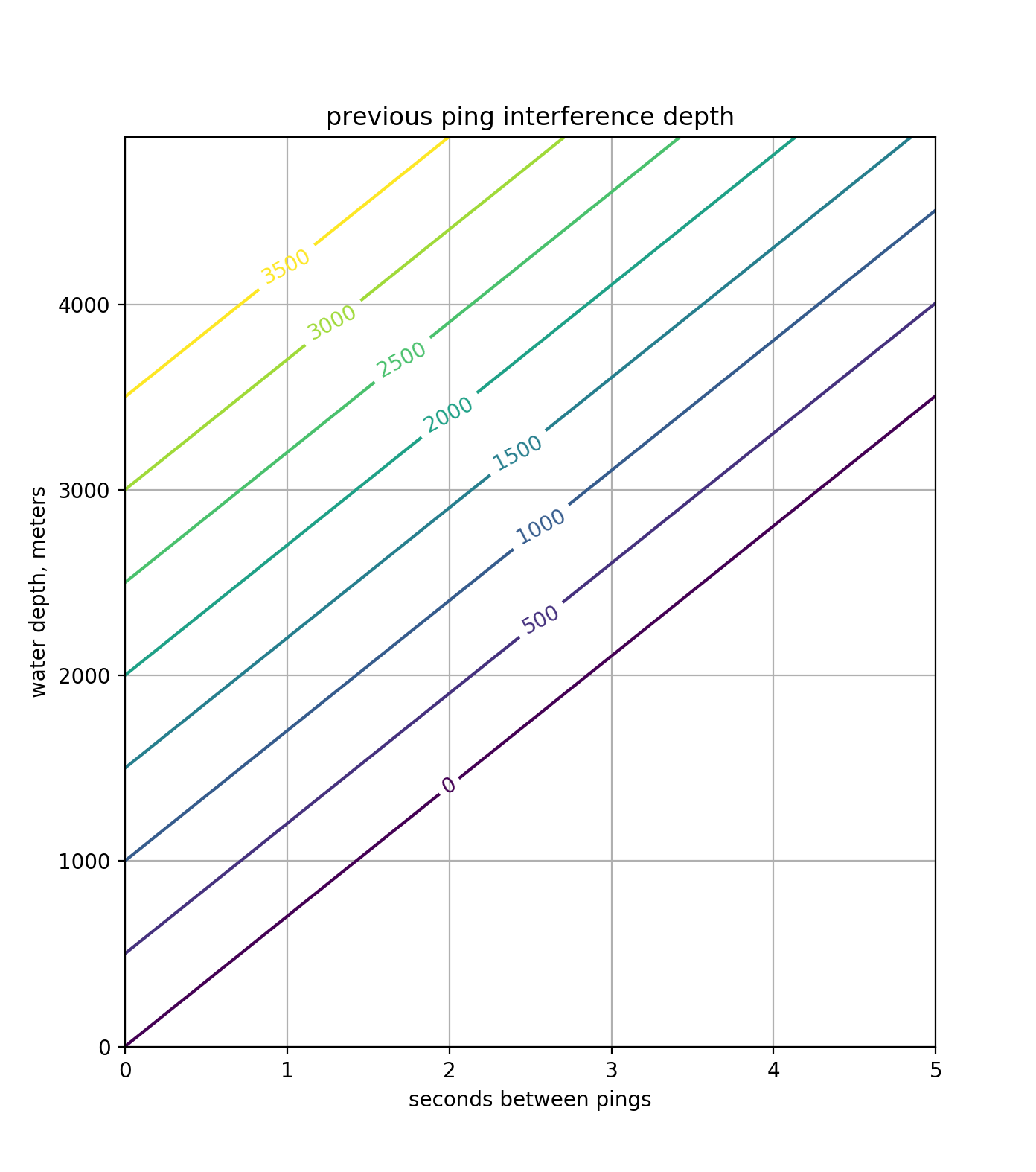4.2.10. Previous Ping Interference¶
The bottom-bounce from one ping can cause bias in the next ping by making the bottom reflection appear ‘hovering’ midwater, like a scattering layer. The reflection is not strong enough for the single-ping editing algorithm to identify it as ‘the bottom’, but the velocities are biased in the same way as a scattering layer “S”, i.e. a lobe of bias in the direction of travel which shallower than the scattering layer, and a lobe of bias in the opposite direction deeper than the scattering layer.
In this case, the ship is travelling southwest.
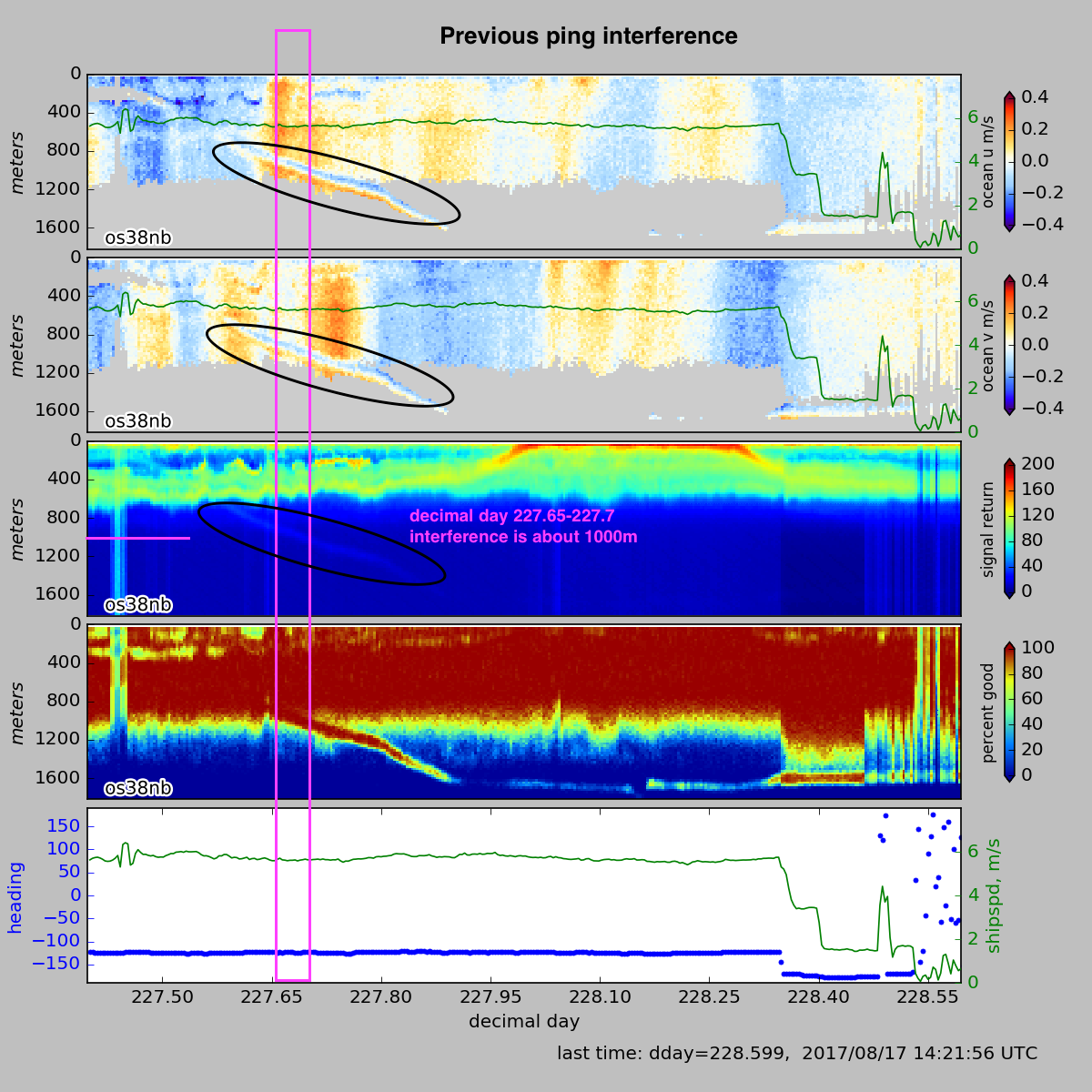
The bottom slopes form 2000m down to 3500. The problematic depth range at this 3-second ping rate is 2000m-3500m.
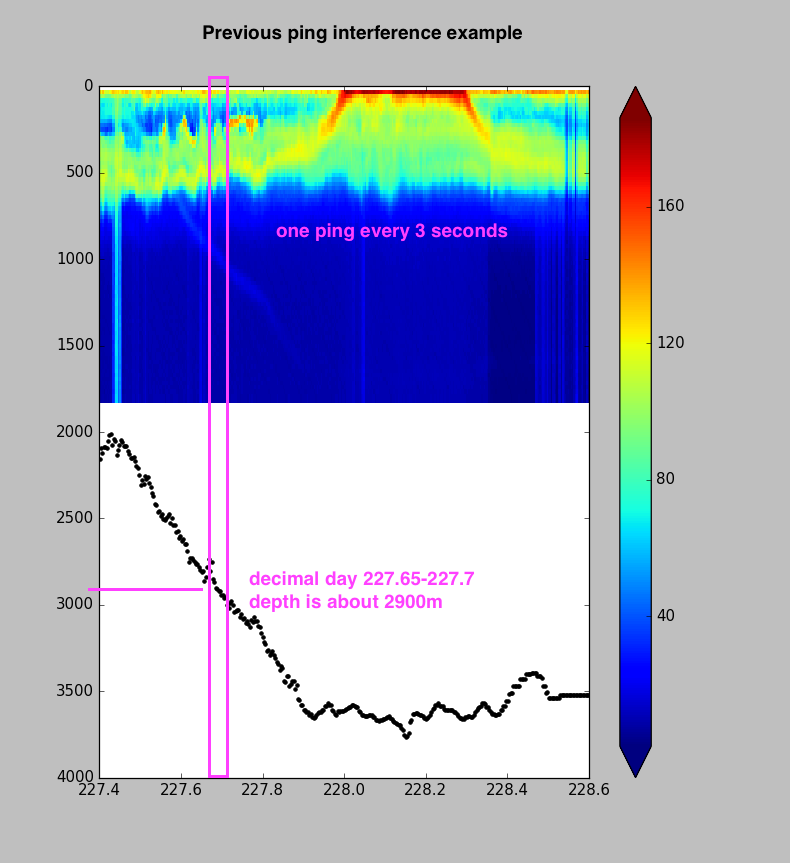
This is a diagram showing depth and time, with the previous ping reflecting off the bottom and being seen (heard) in the subsequent ping.

Here is another example:
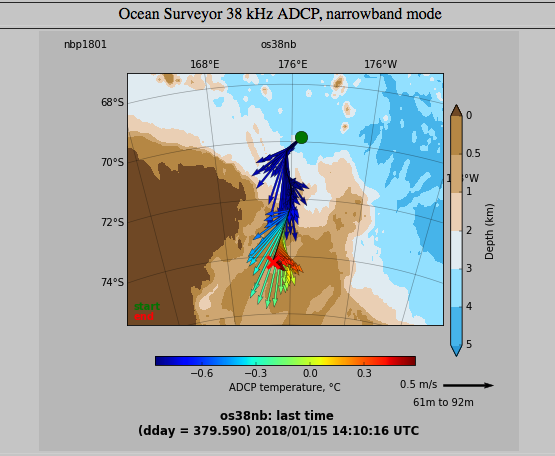
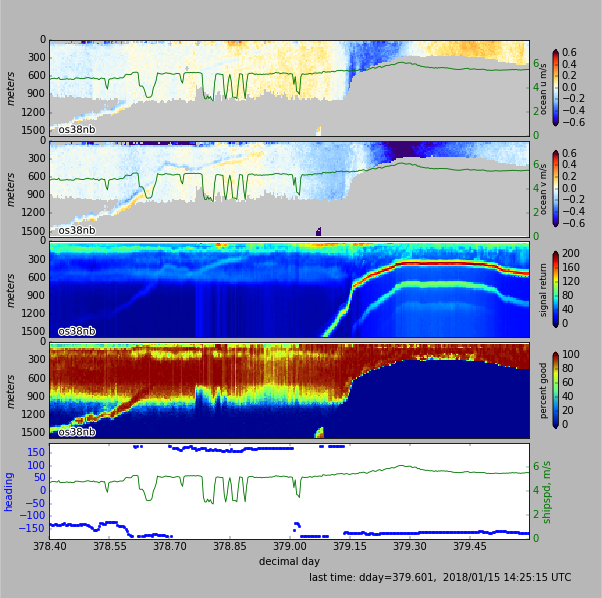
You can look up the depth at which a given ping rate will cause previous ping interference in the figure below:
